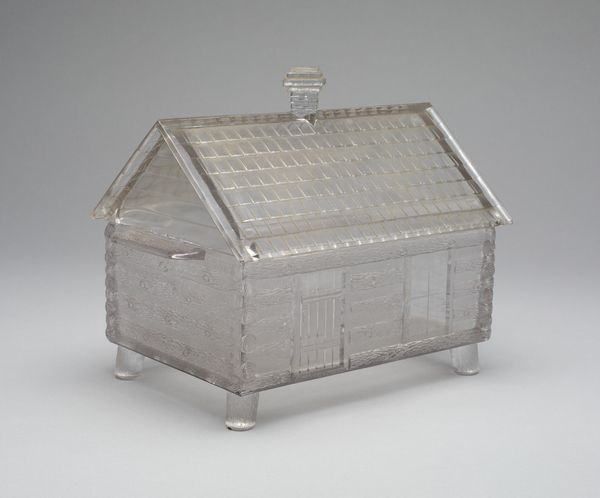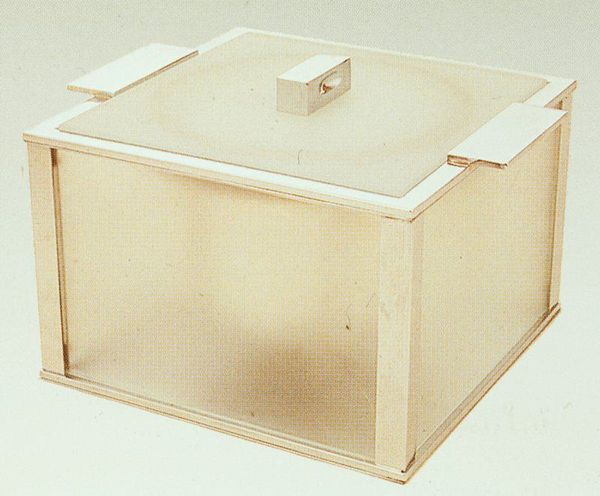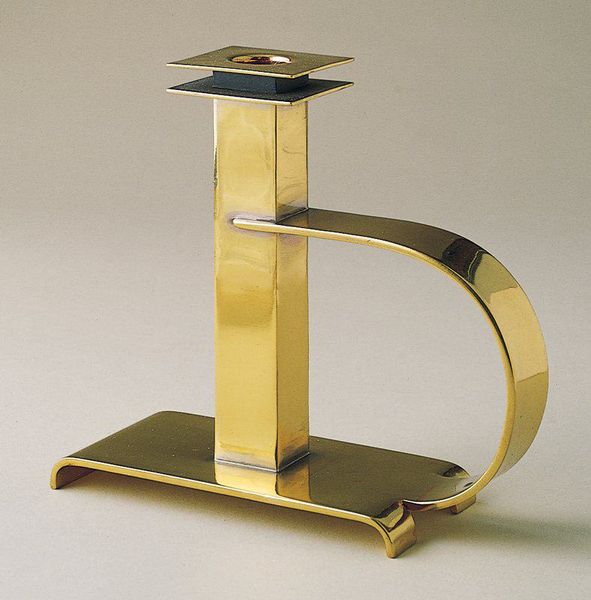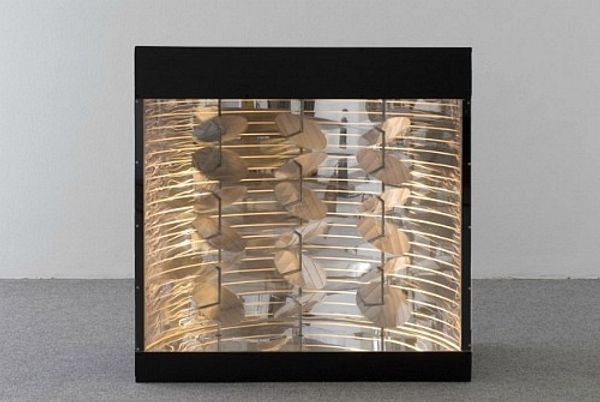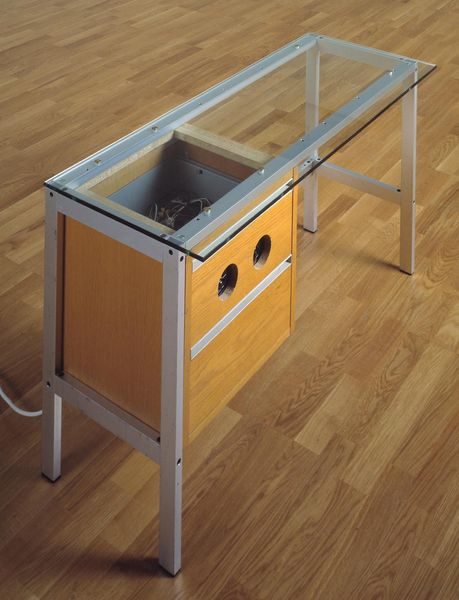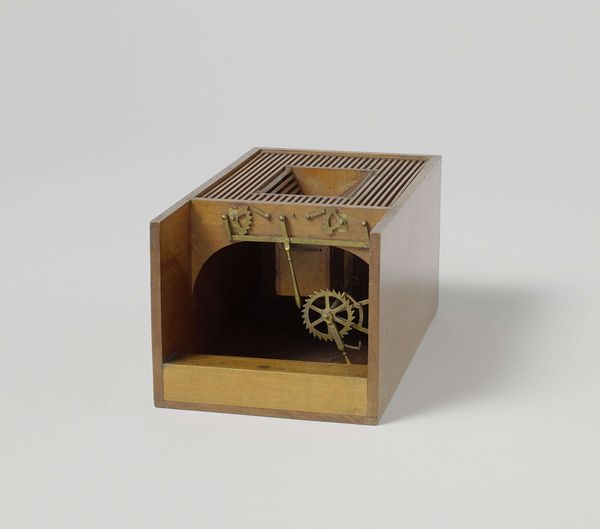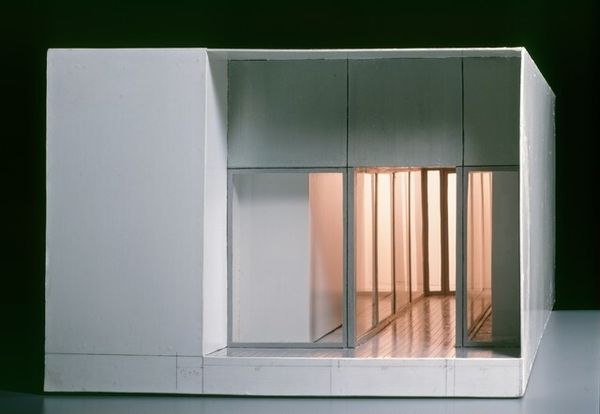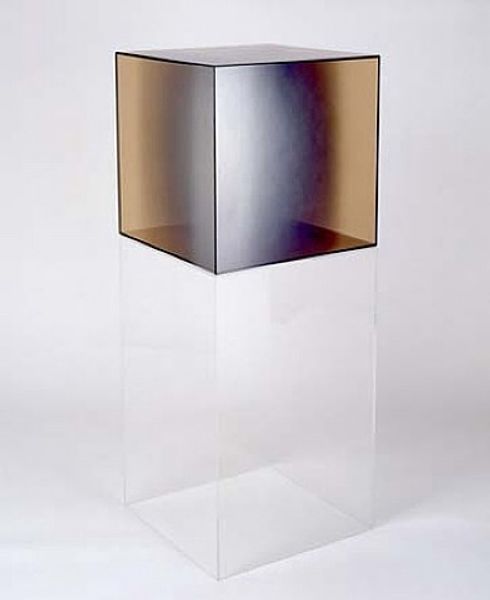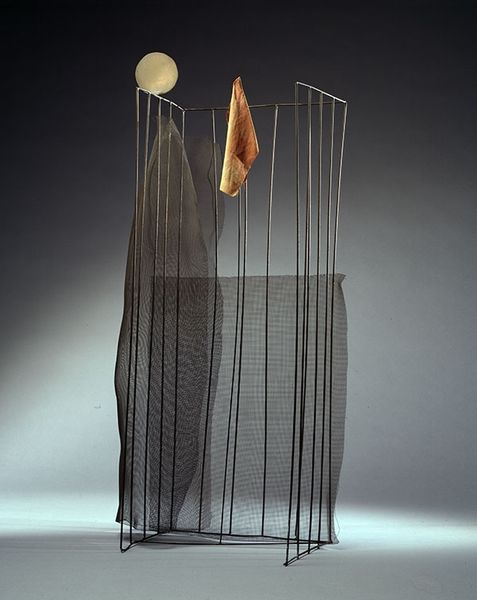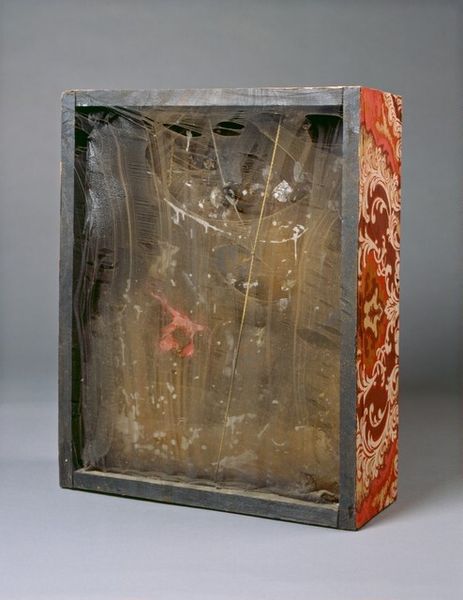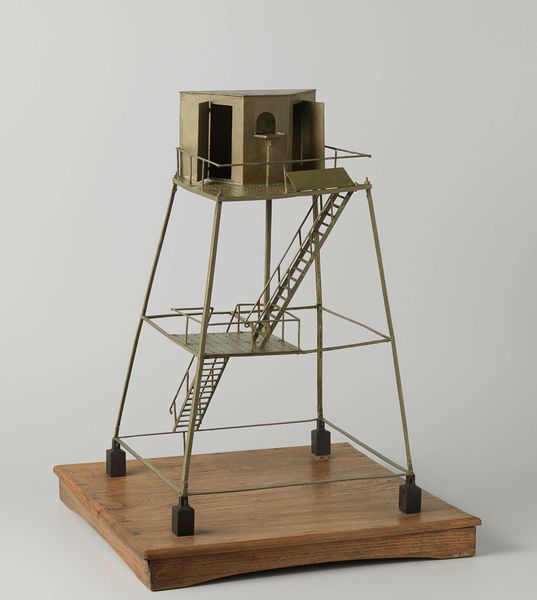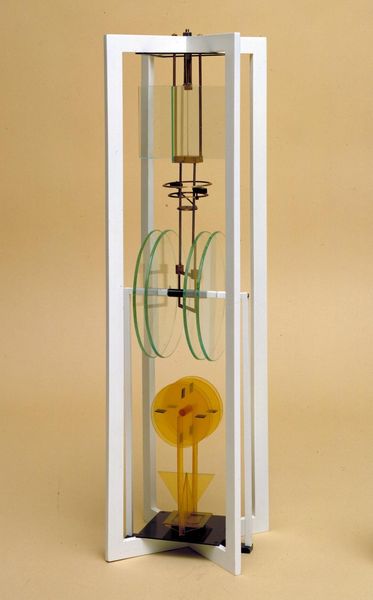
metal, sculpture
#
metal
#
figuration
#
geometric
#
sculpture
#
modernism
Dimensions: overall: 14.4 × 11.5 × 14 cm, 12 lb. (5 11/16 × 4 1/2 × 5 1/2 in., 5.443 kg)
Copyright: National Gallery of Art: CC0 1.0
Editor: We're looking at "Falling Man" by Ernest Trova, a metal sculpture from 1970. It’s fascinating - these stylized human figures inside what looks like a cage. It evokes a feeling of constraint and perhaps even performance. How do you interpret this work, thinking about its historical context? Curator: It’s crucial to consider the period. Trova created this in an era grappling with anxieties about industrialization and social conformity. The 'Falling Man,' a recurring motif in his work, is often seen as a critique of modern man’s loss of individuality within increasingly structured environments. Think about the rigid geometric shapes, the metallic, industrial material... What statement do you think Trova was making by placing these figures inside a box-like structure? Editor: It definitely speaks to a sense of being trapped or observed, almost like specimens in a lab. The figures themselves are so simplified, they lack any distinguishing features, emphasizing that loss of individuality you mentioned. But how did museums and galleries at the time receive such a critical view of society? Curator: That's a key point. Despite its critique, Trova’s work was embraced by many institutions. His aesthetic aligned with the minimalist and modernist trends dominating the art world. It prompts us to question: does institutional acceptance neutralize the artwork’s critical message, or does it provide a platform to spark broader social commentary? Also, consider its accessibility. Is it a symbol, or a social critique? Editor: That's a really interesting question. I suppose its meaning is layered and up for interpretation. Seeing it through the lens of social history definitely adds depth. Curator: Absolutely. Understanding the sociopolitical climate significantly enriches our understanding. Art exists within and reacts to its time, shaping our understanding of it, and perhaps even, society at large. Editor: Thanks, that’s given me a lot to consider. I definitely have a deeper appreciation for how historical context shapes our interpretation of art.
Comments
No comments
Be the first to comment and join the conversation on the ultimate creative platform.

